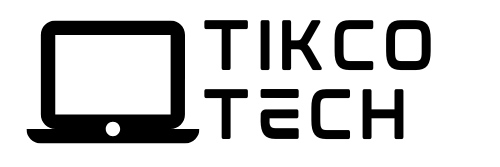In today’s digital age, mastering software has become essential for both personal and professional tasks. Whether you’re a student, a business professional, or someone who manages daily household operations, knowing the ins and outs of software can significantly improve your efficiency and effectiveness. This article will discuss several technical tips that every user should know to navigate different software seamlessly.
1. Software mastering
Mastering software is more than just becoming familiar with the application; it means understanding the tools available and using them optimally. With the rapid advancement of technology, software programs continue to evolve to provide users with a variety of features and functions. However, without the right guidance, navigating these programs can be difficult. Therefore, mastering software is about acquiring the skills needed to use these tools effectively.
2. Learn basic technical skills
One of the fastest ways to become more productive is to master keyboard shortcuts. Learning keyboard shortcuts can significantly speed up tasks instead of relying solely on the mouse for navigation. Whether you’re copying and pasting text, opening a new tab, or undoing an action, keyboard shortcuts make it easier to save valuable time.
3. Main file organization
Effective file organization is critical to maintaining a tidy digital workspace. By creating folders, naming files appropriately, and using a consistent file system, users can quickly find documents when they need them. In addition, searchability is further improved with tags and metadata, allowing information to be retrieved efficiently.
4. Use advanced technology to increase productivity
Task automation
Automation tools allow users to automate repetitive tasks, freeing up time for more critical activities. Whether you’re scheduling emails, generating reports, or updating spreadsheets, automation can streamline workflows, reduce manual intervention, and minimize errors.
Benefits of cloud computing
Adopting cloud computing can bring many benefits, including improved collaboration, scalability, and accessibility. By storing data and applications in the cloud, users can access them from any device with an internet connection, facilitating remote working and seamless information sharing among team members.
5. Security measures and best practices
Password management
As cyber threats increase, it is critical to implement strong password management practices. Using complex passwords, enabling two-factor authentication, and regularly updating login credentials are important steps to protect sensitive information from unauthorized access.
6. Data backup strategy
Implementing regular data backup procedures can reduce the risk of data loss due to hardware failure, malware attacks, or accidental deletion. Whether you use an external hard drive, a cloud storage service, or automated backup software, multi-tier backup ensures data resilience and gives you peace of mind.
7. Software update
Keeping your software up to date is critical for optimal performance and security. Install regular updates to fix vulnerabilities, introduce new features, and improve overall stability. Ignoring updates can leave your system vulnerable to malware and compatibility issues.
8. Handle software crashes
Software crashes are inevitable, but knowing how to fix them can minimize downtime and frustration. Techniques such as restarting applications, updating drivers, and checking for conflicting software can help resolve issues quickly.
9. Optimize software performance
Software refers to unnecessary pre-installed software that consumes system resources and slows down performance. Removing bloatware not only frees up storage space but also increases system responsiveness and efficiency.
10. Use system maintenance tools
Regular system maintenance tasks such as disk cleanup, defragmentation and software optimization ensure optimal performance and longevity of your hardware components. Use built-in maintenance tools or third-party utilities to automate these tasks to keep your system running smoothly.
Conclusion
Mastering software is an ongoing journey that requires dedication, practice and a willingness to learn. By implementing the technical tips in this article, users can increase their proficiency, productivity, and safety when using various software applications. Whether streamlining workflows, solving problems or expanding knowledge, mastering software allows users to use technology effectively in their personal and professional work.
FAQs
1. How to remember shortcuts more efficiently?
Consider creating a cheat sheet or flashcards for common shortcuts and gradually incorporating them into your daily workflow.
2. What are some common pitfalls to avoid when organizing files?
Avoid creating too many nested folders as this can lead to clutter. Also pay attention to file naming conventions to ensure consistency.
3. Why is it important to update your software regularly?
Software updates often include security patches that address known vulnerabilities, reducing the risk of cyber attacks. Furthermore, the update introduces new features and improvements that improve the user experience.
4. What should I do if I encounter frequent software crashes?
Try restarting the application or rebooting the system first. If the problem persists, consider updating the drivers, checking for software conflicts, or reinstalling the application.
5. How do I stay informed about the latest software trends and updates?
Subscribe to technology blogs, follow industry influencers on social media, and participate in online communities to stay up to date on the latest developments in software technology.




